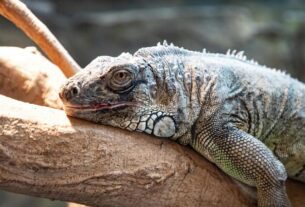Frogs are fascinating creatures that make unique and rewarding pets. Whether you’re a first-time frog owner or looking to improve your frog care skills, understanding their specific needs and handling them properly is crucial for their health and happiness. This guide will cover everything you need to know about caring for and safely handling your pet frog.
Introduction to Pet Frog Care
Pet frogs come in various species, each with its own requirements and behaviors. Before bringing a frog home, it’s essential to research the specific species you intend to keep. This ensures you can provide the correct habitat, diet, and care tailored to their needs. Here’s a step-by-step approach to caring for your pet frog:
1. Choosing the Right Frog Species
Before acquiring a pet frog, consider the size, habitat, and care requirements of different species. Some popular pet frog species include the African Dwarf Frog, White’s Tree Frog, Pacman Frog, and Red-eyed Tree Frog. Each species has distinct care needs in terms of temperature, humidity, diet, and handling preferences.
2. Setting Up the Frog Habitat

Creating a suitable habitat is crucial for the health and well-being of your pet frog. Here’s how to set up an ideal enclosure:
- Enclosure: Choose a tank or terrarium that provides enough space for your frog to move around comfortably. Ensure the enclosure has a secure lid to prevent escapes and maintain humidity levels.
- Substrate: Use a substrate that mimics the frog’s natural environment, such as coconut fiber, sphagnum moss, or clean soil. Avoid substrates that could be ingested and cause digestive issues.
- Temperature and Humidity: Maintain appropriate temperature and humidity levels according to your frog species’ requirements. Most pet frogs thrive in temperatures ranging from 70-85°F (21-29°C) with humidity levels around 50-70%.
- Lighting: Provide appropriate lighting for your frog’s enclosure. Some species may require UVB lighting to aid in calcium absorption, especially if they are primarily nocturnal.
- Decor and Hideouts: Add live or artificial plants, branches, and hiding spots to create a natural and stimulating environment. Ensure all decorations are securely placed to prevent injury.
3. Feeding Your Pet Frog
A balanced diet is essential for the health of your pet frog. Most pet frogs are carnivorous or insectivorous, feeding on live prey such as crickets, mealworms, waxworms, and small feeder fish. Here’s how to ensure your frog gets the nutrition it needs:
- Variety: Offer a variety of prey items to ensure your frog receives essential nutrients. Gut-load insects with nutritious foods before feeding them to your frog.
- Feeding Schedule: Feed juvenile frogs daily and adult frogs every 2-3 days, adjusting the feeding schedule based on their appetite and activity level.
- Supplementation: Dust prey items with a calcium and vitamin D3 supplement to prevent nutritional deficiencies, especially if your frog doesn’t receive UVB light.
4. Handling Your Pet Frog Safely
Handling a pet frog requires gentle and careful techniques to prevent stress or injury. Here are steps to handle your frog safely:
- Wash Hands: Before handling your frog, wash your hands thoroughly to remove any chemicals or residues that could harm them.
- Approach Slowly: Approach your frog calmly and slowly to avoid startling them. Use a cupped hand or scoop to gently lift and support their body.
- Support Body: Support your frog’s body and limbs when lifting them to prevent accidental falls or injuries.
- Limit Handling: While some frogs tolerate handling well, others may find it stressful. Limit handling to necessary activities like health checks or tank maintenance.
5. Health Monitoring and Veterinary Care
Regularly monitor your pet frog’s health to detect any signs of illness early. Common health issues in frogs include skin infections, respiratory infections, and parasites. Here’s how to ensure your frog stays healthy:
- Observation: Observe your frog daily for changes in behavior, appetite, skin appearance, or mobility.
- Veterinary Check-ups: Schedule regular check-ups with a veterinarian experienced in exotic pets. A vet can perform health assessments, fecal examinations, and recommend treatments if needed.
- Quarantine: Quarantine new frogs before introducing them to an existing group to prevent the spread of diseases or parasites.
Conclusion
Caring for a pet frog involves creating a suitable habitat, providing a balanced diet, and handling them safely. By understanding their species-specific needs and behaviors, you can ensure your frog thrives in captivity. Remember to research thoroughly, provide proper care, and handle your frog gently to build a trusting relationship. With the right approach, owning a pet frog can be a rewarding experience filled with wonder and enjoyment of these captivating amphibians.
FAQs on Handling and Caring for Your Pet Frog Safely
1. What should I consider before handling my pet frog?
Before handling your pet frog, ensure your hands are clean and free of any chemicals or residues that could harm them. Approach your frog calmly and slowly to avoid startling them. Support their body and limbs gently to prevent stress or injury.
2. What are the common mistakes to avoid when setting up a frog habitat?
Common mistakes include using substrates that can be ingested and cause digestive issues, inadequate temperature and humidity levels, and not providing enough hiding spots or enrichment. Ensure the enclosure is secure with a lid to prevent escapes and maintain a healthy environment.
3. How often should I feed my pet frog?
The feeding frequency depends on your frog’s age, size, and species. Generally, juvenile frogs require daily feeding, while adult frogs can be fed every 2-3 days. Offer a variety of live prey insects such as crickets, mealworms, and waxworms, appropriately sized for your frog.
4. Is it safe to handle my pet frog regularly?
While some frogs tolerate handling well, others may find it stressful. Limit handling to necessary activities like health checks or tank maintenance to minimize stress. Always support your frog’s body and avoid sudden movements to prevent injuries.
5. How can I tell if my pet frog is healthy?
Monitor your pet frog daily for signs of good health, including active movement, alertness, clear skin without lesions or discoloration, and a healthy appetite. Changes in behavior, such as lethargy or loss of appetite, can indicate health issues, and prompt veterinary care may be necessary.




